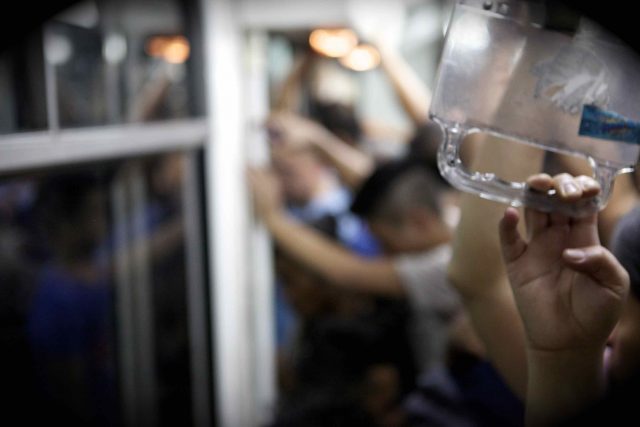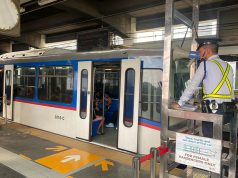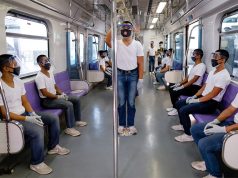MANILA—On Thursday morning, I took the MRT because I was desperate to catch up with an appointment in Quezon City, and made a quick mental calculation that, all things considered, it was better than my original idea of looking for a “P2P” bus that connects Ayala malls (I was going from the Glorietta area to Trinoma).
There was a heavy weight on my chest as I took the long walk to the MRT Station on Ayala, fell in line to purchase a beep card, and suffered the long wait for the next train—the intervals between trips having grown longer by the day as fewer and fewer trains were being deployed. My God! From 73 we went down to 50-plus a few years ago, then 30-plus, and now we’re down to just seven to eight trains running daily. These, for a ridership of half a million Filipinos desperate to get to work or school, or whatever important mission they have for the day.
The trepidation at knowing I’d have to squeeze myself in an overflow crowd; the pain and difficulty of enduring the physical crush just to join that sea of humanity–yes, it was unbelievably crowded even on the so-called “priority” coaches which they reserve for the disabled, pregnant women, and for senior citizens like me—all that fear and pain was replaced by pure anger as I began hearing the stories of fellow riders on the 22-minute ride.
The stories tumbled out of my fellow riders’ mouths as soon as the doors closed and the last passenger managed to squeeze herself and her two big bags in. All the while, she had kept saying, “paunahin niyo na po ako, uuwi pa ako sa Nueva Ecija [Please let me get in first. I still have to go home to Nueva Ecija].” She must have been in her early sixties, and looked exhausted as she pushed in a trolley bag and a duffel bag on top of it. She smiled faintly as I tried to make more room for her. The crush of people was oppressive.
I looked to my left and noticed a little girl wearing a face mask, looking like she was about to cry. An elderly woman was comforting her, trying to move her to a spot where she could avoid the crush. Because she wore a face mask and looked pale, I assumed she was sick.
Behind me, a cripple was trying to adjust his crutches. In front, two elderly men squirmed in their tiny precious spot; one was trying to be helpful to the persons with disability, the other simply ranted. The helpful old man kept saying, “person with disability!” to no one in particular, until I realized what he was staring down for. What I initially thought was a child was actually a midget – she was apparently an office worker in uniform and was having difficulty finding some breathing space, and the old man kept hollering “PWD!” so that people would be aware of her. So I sought to find some room in my tiny corner and beckoned for her to hold on to the metal rail.
The old woman bound for Nueva Ecija then started talking: “Bakit naman kasi pinabayaang maging ganito? Bakit pito na lang ang tren? Dalawang beses na nga akong na-turn back, di ako makasakay, kaya sumigaw na ako kanina para mapagbigyan naman ako [Why did it have to turn out this way? Why are we left with just seven trains? I’ve not been able to board twice, that’s why I was shouting, appealing to be let in first].”
She said she had to go home to Nueva Ecija, and pointed to her two bags. She was getting off at Cubao, to walk a considerable distance to the bus terminal.
The old woman with a masked child joined our conversation. She volunteered, “how can they maintain their MRTs better in other countries? Nothing of this sort ever happens in Malaysia, where there are always enough trains and no one has to stand up the entire trip. This kind of squeezing in is unheard of there.”
I asked if she had worked in Malaysia, and she nodded.
She then shook her head and volunteered: “Pinagtiyatiayagaan ko itong MRT natin kasi wala naman kaming masakyan ng apo ko, e. Kelangan ko siyang dalhin madalas sa ospital.”
I looked down at her grand-daughter, a wisp of a girl with sad eyes. She looked harassed and ready to cry. The old woman then told me in a half-whisper, “pitong beses na iyan na-operahan. Incomplete esophagus kasi [She’s been operated on seven times. She has an incomplete esophagus].”
Grandmother and child were also bound for Cubao, there to take a connecting ride to the Philippine Children’s Medical Center (PCMC), where doctors had patiently been treating the girl for years since she was three years old. The girl is now 12, but looked 7. The old woman said no one believes she’s 12 because she’s so frail, “but at least, she has lived this long.” I asked if she’s able to go to school, and the old woman replied, “yes, though there’s been some disruption. She’s just in Grade 3 when she should be in Grade 6.”
Nonetheless, the woman conceded, she had a lot to be thankful for because the child is alive. The story just kept tumbling out of her mouth: the girl was abandoned by her mother and this “lola,” the father’s mother, had taken care of her since she was little.
It’s been a hard journey, she said, both for herself and her grand-daughter. But she credits the doctors at PCMC for always encouraging her. She said the child had survived for many years on fruits and vegetables she had processed in a blender.
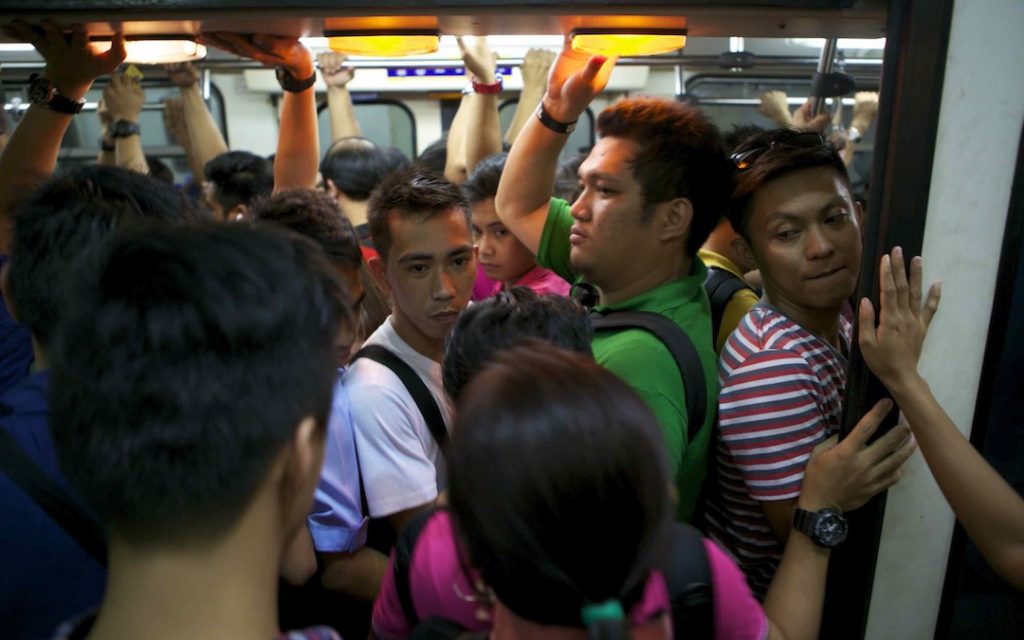
When I said, “wow, you really must love your grandchild so much!” she replied, “of course! But I hope I don’t have to carry her again across the rails.” I was puzzled, and she replied to my unverbalized question: “Yes, I’ve experienced one of those breakdowns where they ask everyone to get down and walk to the next station. She was with me, and when she felt very weak and tired midway I had to carry her.”
Whatever compassion and admiration I felt for the woman and child was replaced by a creeping anger that welled in my heart, against those who brought us to such pits. I tried to imagine what that must have felt like–being old, and having to walk with a sick child in tow, having to carry her half of the time, and I grew angrier.
I thought of Cesar Chavez, the former media colleague who resigned his job as DOTr undersecretary for rails, and his unforgettable statement: “Someone has to be responsible for this mess” as he explained why he had to leave a job no one wanted to do because it was so thankless, and even though he had no hand in creating that mess in the first place.
The old woman from Nueva Ecija broke my thoughts and said, “Naku, titigil tayo ulit, masasagasaan na naman ako [Oh dear, the train’s gonna stop again and I’ll be run over by people],” referring to that quick, mad turnover of passengers at every station, when those needing to disembark must hustle their way out, all the while shouting, “May bababa [someone’s gonna get off]!” to avoid being stuck inside because twice the number of people outside are trying to get in.
When I realized the Ecija woman’s predicament, we “strategized.” Each time the train prepared to pull up a station where the door behind her was set to open, we would look for a corner where she could quickly dart to in between the shuffle of people elbowing their way out and people hustling in, much like a human Rubic’s Cube.
Finally, Cubao station, where the biggest number of people always disembark. The train finally had some decent space. I stared out the window at these two old women trying to make their way in a world of increasingly uncivil people. One mightily trying to let her grand-daughter survive; and the other lugging two big bags to a bus station to get home to Nueva Ecija.
As the frail girl with an incomplete esophagus disappeared with her lola into the crowd at the terminal, I was reminded of my favorite nephew, also a survivor of surgeries in infancy. He was but three months old when he went under the knife thrice, also at Philippine Children’s Medical Center. The PCMC doctors did their job well, because he has since lived a normal life. In fact, I distinctly recall our first MRT ride together. The coach was new and cold, the trip smooth as silk, and there was so much space my then 5-year-old nephew—a friendly, precocious boy—went up and down the aisle shaking people’s hands and saying “hello.”
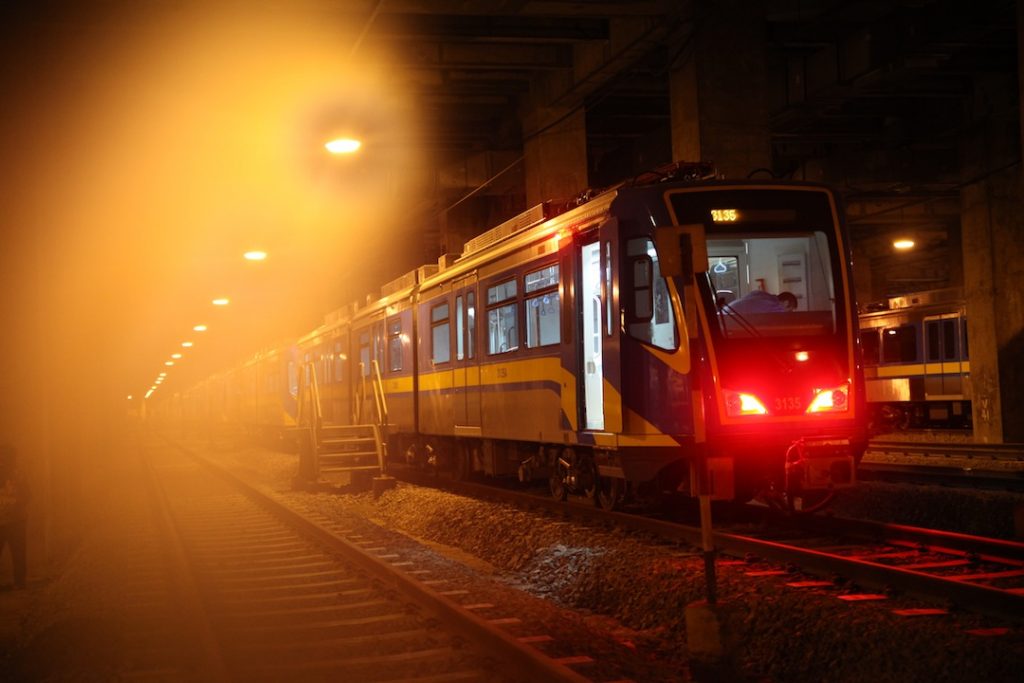
That MRT as we knew it seemed to belong to another planet now. This MRT is hell, and for the people who have no choice but to use it, it’s like Lent has come a wee bit early.
Meanwhile, one could sense the palpable anger at a previous regime that dropped the ball because it seemed to have forgotten that people’s lives are first and foremost about being able to live, eat, and move about to go to work or school. That is the biggest irony – and tragedy: a foul-mouthed mayor who disdains concepts of human rights becomes, inevitably, the man people will identify with, because he seems to sense what they feel, and says the things they long to hear.
Soon, though, there will be a reckoning, because people remember that the new leaders promised to rectify the neglect and mistakes of the past, crowing about the corruption, the sheer ineptitude and the lack of heart for what people need. And they cannot wait forever.

